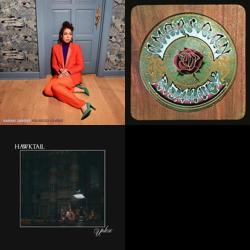A few weeks ago I began using an iOS app called Marvis (which, I cannot recommend enough for helping to organize and find albums/playlists in your Apple Music). Using Marvis, I’ve created a few rule/filter sets that help me surface albums I haven’t listened to in a while.

However, what I am finding is a disappointingly large number of albums I have ripped or collected in MP3/FLAC over the years are incomplete.
Take this Neil Young album, After the Gold Rush for example:

Why in the world am I missing track 3?
I know that I own this CD and ripped it myself. I’m totally confused as to why the track is missing. At first I thought Apple’s Cloud Sync was somehow to blame and that this track was just missing in my Apple Library but not on the actual filesystem. No such luck. It’s missing on my external SSD as well as on my backup drive.

I am totally confused about what’s going on here!
The Great Purge
Marvis has helped me realize that I have a bunch of albums in my Apple Music Library that I am never going to listen to. Stuff that I’ve acquired over the past 20 years or so. In the early years of digital audio, in a frenzy of “digital music acquisition syndrome” I just piled my external drives up with all sorts of garbage as friends and I would trade drives. For example, I like some Bjork now and then, but do I need her complete library? Prob not.
Anyway, I have set a goal to reduce my Apple Music Library to just the essentials. I’ll keep complete albums that matter to me and remove stuff that I’ll probably never spin. But while I remove the cruft from my Apple Library, I’ll keep the source files on my filesystem/external drive so that if I ever want to reimport them, I can.
Which leads me back to my incomplete album problem. Some of the albums I want to keep in my Library have ended up being incomplete which is a bummer.
As usual, Doug Adams’ Doug’s Applescripts site has a script I can run to help me at least determine which of my albums are incomplete. Albums Amiss has proven especially helpful:
This script uses track information to calculate whether a particular batch of tracks with the same Album title represent an incomplete or over-complete album, with either too few or too many requisite album tracks. Such batches will be copied to a discrete results playlist where they can be examined. The entire Music library or an individially selected Smart playlist can be scanned. (To be clear: the script does not check some kind of online database; it uses the extant local track entry information. Thus, tag accuracy is essential.)
Of the 2,400 or so albums currently in my library (I’ve already purged about 300, so, progress!) this AppleScript found 700 that are incomplete. Now, at least some of those are because my track entry tags are missing but a lot are just plain incomplete albums. So this helps jumpstart the purge in 2 ways:
- Start by reviewing the albums that are missing tracks for stuff I’ll never listen to and remove it from my library
- Determine which incomplete albums I want to rerip from CD (and do so in some kind of lossless format this time around)
Hopefully when this little project is done, I’ll have an Apple Music Library that consists of complete albums that I want to listen to and not a lot of cruft. From there, I ought to be able to build out some especially useful/inspiring lists in Marvis.
This, combined with my current habit of buying vinyl from artists I’m currently digging, makes me feel like I’m moving just the tiniest bit away from streaming as my preferred way of listening to music.
Anyway, if you are interested in learning more about Marvis, here is a terrific writeup of the application from Marc Barrowclift.














